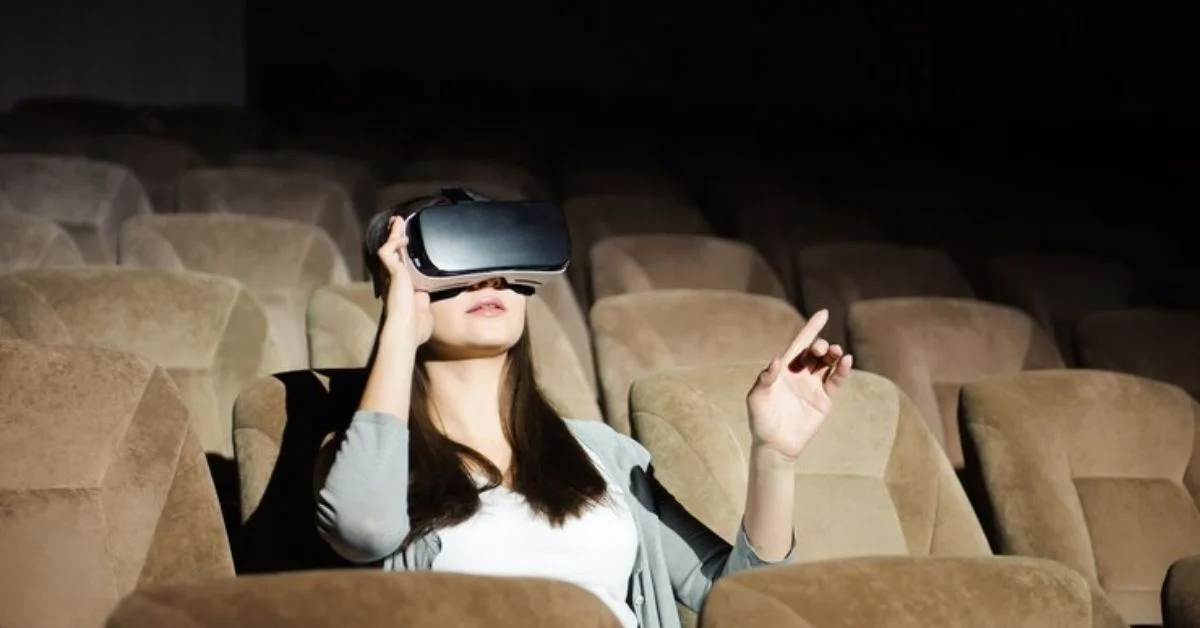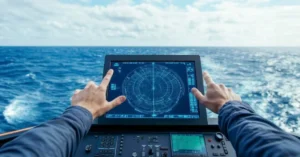When a person searches the term “PRMovie”, it often comes from curiosity: What is it? Is it a movie studio? A genre? A new streaming format? And more recently, people are asking, Is PRMovie the future of cinematic storytelling?
Here’s the answer in simple terms: PRMovie stands for Personalized Reality Movie—a fast-emerging genre and format of media content where the viewer’s identity, preferences, data, and decisions shape the film they experience. It represents a new crossroad of film, artificial intelligence, real-time rendering, and interactive storytelling, creating movies that are no longer static but personally reactive.
This is not sci-fi. PR-Movie is already taking shape, and in this comprehensive article, we’ll explore how it works, why it matters, and how it could change not only how we watch movies, but how we experience stories altogether.
The Searcher’s Intent: What Does “PRMovie” Actually Mean?
When people look up “PRMovie,” they’re often looking for:
- A definition of PR-Movie
- Its application in cinema or media
- Technologies that power it
- How it differs from traditional movies or VR
- Why it’s being talked about now
This article delivers those answers and much more—offering an insider-level understanding of what Personalized Reality Movies are and how they’re set to reshape entertainment as we know it.
What Is a PRMovie?
A PRMovie is a Personalized Reality Movie—a digital film that adapts its content, pacing, perspective, or even characters based on the viewer’s profile, emotional responses, preferences, or real-time choices.
Think of it as custom cinema. Every person may watch the “same” PR-Movie, but the version they see, hear, and feel is tailored just for them.
Key Features:
- Dynamic narrative branches based on input (emotional, biometric, or manual)
- Character responses that adapt to viewer preferences
- Scene pacing that shifts depending on attention span or focus
- AI-driven character dialogue and facial expressions based on user reactions
- Real-time rendering or adaptive CGI to reflect personalized environments
Unlike traditional films, where the story is fixed, a PR-Movie is semi-autonomous—its spine is scripted, but its skin is ever-changing.
How PRMovies Work: A Breakdown of the Technology
Creating a PR-Movie requires a complex but integrated ecosystem of technologies:
1. User Data Integration
Before or during a PR-Movie, the system pulls in viewer data. This may include:
- Profile preferences (e.g., favorite genres, characters)
- Historical media consumption
- Mood tracking (via camera, voice, or wearable device)
- Real-time decisions made in film
All data is anonymized and consent-driven, in ethical deployments.
2. AI-Powered Narrative Engines
At the heart of a PR-Movie lies an AI model—often powered by large language and vision models—that helps:
- Predict what scene will resonate emotionally
- Adjust dialogue or scene length dynamically
- Introduce subplots or scenes tailored to user context
3. Real-Time Rendering
Game engines like Unreal or Unity are used to render cinematic scenes on the fly—offering changes in:
- Character gender or appearance
- Environmental design (e.g., a cityscape turning into a forest)
- Musical score intensity based on emotional feedback
4. Interactive Decision Trees
Similar to “choose your own adventure” formats, viewers can make direct or passive choices. These may be:
- Tapping choices via remote or app
- Facial expressions triggering scene changes
- Biofeedback (e.g., heart rate spikes triggering suspense)
The result: a film that is not only personalized before you watch it, but that actively changes while you’re watching.
What PRMovies Are Not
Before diving further, let’s be clear about what a PRMovie is not:
- It is not traditional VR: While immersive, PR-Movies can be viewed on a flat screen.
- It is not a video game: The core is still cinematic, not fully controllable.
- It is not user-generated content: Though AI tailors the film, it’s not authored by the viewer.
- It is not just interactive film: This is reactive and adaptive, more than just branching paths.
The Rise of Personalized Reality in Media
PR-Movies fit within a broader shift toward user-centric entertainment, where audiences no longer passively consume content—they co-create it.
Major Drivers of This Trend:
- AI and machine learning making content personalization scalable
- Sensor technologies tracking real-time emotion and attention
- Viewer fatigue with passive, one-size-fits-all media
- Gaming culture, which promotes agency and immersion
- Streaming platforms seeking next-generation engagement strategies
In short, PR-Movies are a natural evolution of storytelling—just as silent films became talkies, and 2D gave way to 3D, the next frontier is adaptive narrative form.
Applications Beyond Entertainment
Though movies are the obvious playground for PRMovie technology, the applications extend far beyond:
1. Therapeutic Media
- PRMovies can adjust scenes to promote calm, reduce anxiety, or provide guided narrative therapy.
- Used in mental health and trauma recovery scenarios.
2. Education
- History comes alive in PR-Movies, adjusting complexity and focus based on the learner’s progress and interest.
- Language learners can watch a film in real-time adaptive bilingual mode.
3. Corporate Training
- Training simulations become cinematic experiences tailored to each trainee’s behavior and pace.
- Used in HR, emergency training, and DEI programs.
4. Marketing and Brand Storytelling
- Imagine a brand launch video that changes tone, length, or visuals depending on viewer profile.
- Hyper-targeted storytelling creates emotional resonance and brand memory.
Ethical and Artistic Challenges
Privacy and Data Consent
Since PRMovies use personal data, privacy is paramount. Ethical PR-Movie production requires:
- Full opt-in consent
- Data anonymization
- Clear data retention policies
- Transparency in personalization parameters
Artistic Integrity
Will PR-Movies dilute the artist’s vision? Critics say that adaptation may compromise narrative authority, but proponents argue:
“A well-built PR-Movie is not less artful. It’s art that listens.”
The challenge lies in balancing directorial intent with adaptive freedom.
What Watching a PR-Movie Feels Like
Imagine a noir thriller where the detective’s accent matches your hometown, the love interest mirrors your romantic preferences, and the twist ending depends on whether you smiled or looked away in Act II.
That’s not theoretical—it’s already happening in prototype projects tested by entertainment labs and universities.
Some viewers report feeling more emotionally engaged, more likely to re-watch, and more likely to recommend a PRMovie due to the personal touch.
Industry Adoption and Future Outlook
Who’s Building PRMovies?
- Indie Studios – experimenting with AI tools for niche PRMovie experiences
- Tech Giants – investing in real-time media engines and adaptive storytelling
- Streaming Platforms – testing personalization beyond recommendations
- Universities – studying media psychology and AI storytelling ethics
What’s Coming Next?
- Live-action PR-Movies, where scenes are filmed in modular versions
- Hyper-local PR-Movies, where regional cultures influence plotlines
- Multiplayer PR-Movies, where shared decisions among viewers shape outcomes
- Emotionally sensitive PR-Movies, that react to sadness, laughter, or tension dynamically
By 2030, PRMovies may be standard options on major platforms, much like subtitle or language selection today.
Conclusion: PRMovie and the Reinvention of Storytelling
The rise of PRMovie marks one of the most profound shifts in modern media. It challenges the century-old structure of storytelling—offering not just a story told to you, but one that unfolds with you.
This evolution invites filmmakers, technologists, ethicists, and audiences into a shared conversation:
What does it mean to be part of a story?
Bubbling with potential, PRMovies are not just entertainment—they are experiences that mirror, learn from, and respond to the people who watch them. Whether used for empathy, education, or pure exhilaration, PRMovies are not science fiction anymore. They are the future—and, increasingly, the present—of human-centered storytelling.
FAQs
1. What is a PRMovie?
A PRMovie is a Personalized Reality Movie—an adaptive, AI-driven film experience that changes based on your data, reactions, and choices.
2. How is a PRMovie different from a regular movie?
Unlike traditional films, PRMovies are dynamic. They adjust scenes, dialogue, pacing, or visuals depending on your behavior or preferences.
3. Do I need special equipment to watch a PRMovie?
Not necessarily. Many PRMovies are designed for standard screens, though advanced versions may use wearables or camera inputs for emotional tracking.
4. Are PRMovies only for entertainment?
No. PRMovie formats are being used in education, therapy, marketing, and professional training for customized storytelling and engagement.
5. Is my personal data safe in PRMovies?
Ethical PRMovie systems require your consent and anonymize data. Look for privacy-forward platforms and clear data policies before engaging.
For more information, click here.









